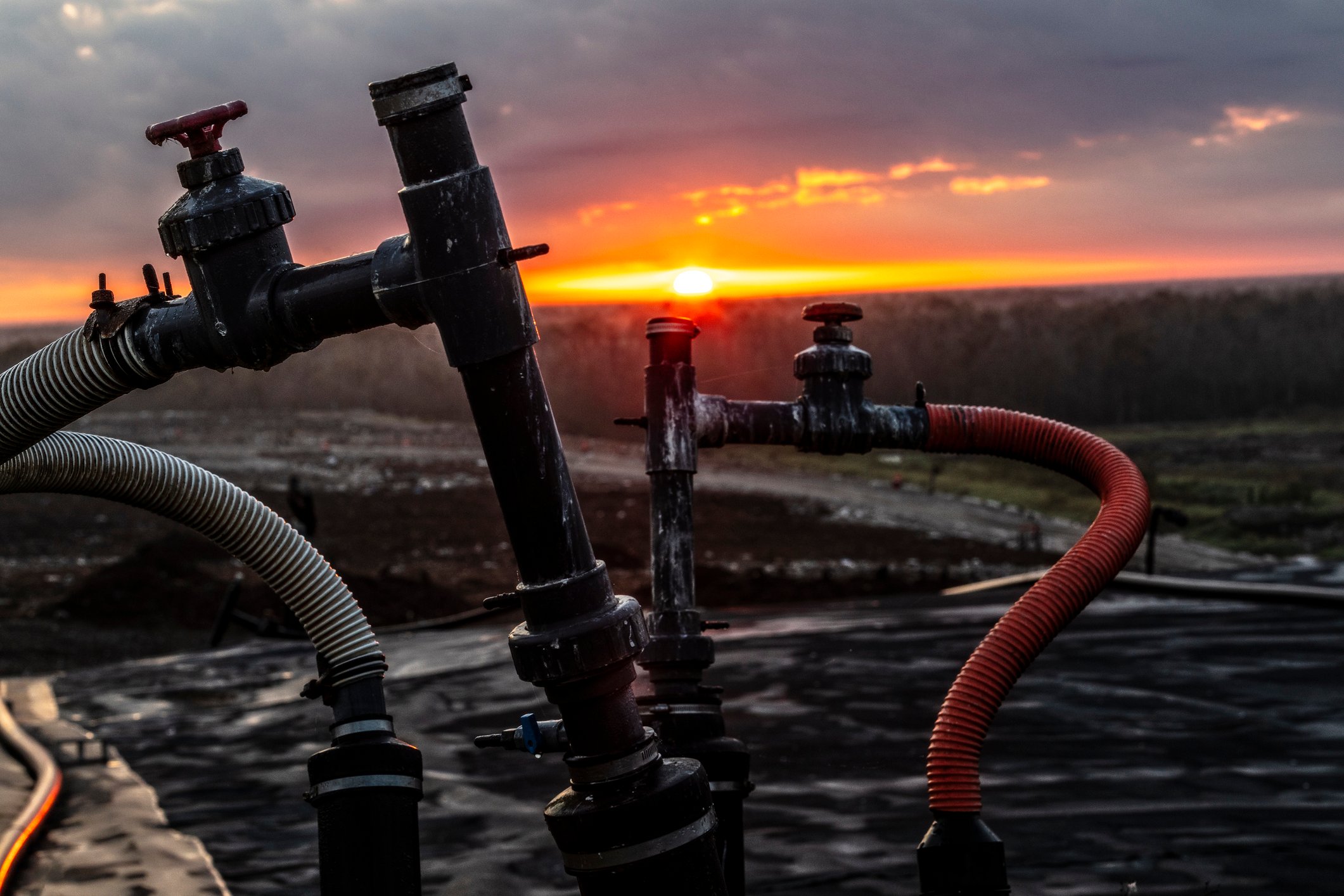
The 100th Supercharger station opened on April 24, 2014, in Hamilton, N.J. We may see 1,000 sooner than you think. Source: Tesla Motors.
There aren't many electric vehicles on the road in the United States, especially when compared to the incumbent population of petrol-powered automobiles, but America does have an ample and renewable supply of cows, garbage, and flushable toilets. Leveraging our nation's strengths in the latter could help make electric vehicle charging stations -- including Tesla Motors' (TSLA +0.90%) Supercharger sites -- as numerous and widespread as gas stations. No, this isn't a joke. And yes, this is actually quite probable. In fact, you'll wonder why it wasn't attempted sooner.
How will it work? The U.S. Environmental Protection Agency will now recognize natural gas fuels sourced from biogas (also called biomethane or renewable natural gas) captured at landfills, farms, and wastewater treatment plants as advanced biofuels. That won't help Tesla Motors as much as it helps Waste Management (WM +0.88%) and Veolia Environment (VE +0.96%), but the agency also ruled that electricity created from combusting biomethane and used to power electric vehicles qualifies for the same advanced biofuel incentives (electric vehicles are covered under the Renewable Fuel Standard, too). The new rule could possibly bring the Tesla Supercharger network to your town by the end of the decade. Here's how.
Tesla Motors' ambitious plans
The fierce battle over range anxiety and whether Tesla Motors' electric vehicle-charging stations would provide the coverage needed to combat it has played out many times in the last several years. Someone takes an ill-fated ride in a Tesla Model S and writes furiously about it, only to be refuted by an enthusiast easily completing a cross-country trip several weeks later. I'm not here to say the planned network is ill-equipped to cover its drivers. After all, it is intended to cover 98% of the American population in 2015, as displayed in the map below.

This is what the Supercharger network should look like in 2015. Source: Tesla Motors.
Covering 98% of the population means drivers will never be more than 100 miles away from a Supercharger. That's a pretty amazing accomplishment for the short amount of time needed to reach the milestone -- which will only improve as Tesla Motors brings mass market cars to market -- but there's plenty of work left to be done. Why not leverage America's vast biogas reserves to bring a Supercharger to every town or municipality?
Biomethane boost
It's still much too early to say whether Tesla Motors will join forces with companies such as Waste Management, Veolia Environment, and large farming operations to expand Supercharger coverage, but the partnership potential makes almost too much sense. Regions with higher populations will have a greater need for charging stations. However, they'll also produce more garbage and wastewater and have a greater need to process such wastes. And while large farming operations are located in less dense population centers, they produce as much as 34% of the nation's methane. Good news: biomethane can be purified to pipeline-quality gas and shipped throughout the nation to where it is needed most.
What's the potential for biomethane? The American Biogas Council estimates (link opens PDF) that roughly 540 landfills (22% of capacity), over 2,000 wastewater treatment plants (63%), and more than 6,300 farms (97%) across the nation have the potential to economically capture and use biomethane but aren't doing so today. In addition, thousands of sites could economically produce biogas from food waste or send it to an anaerobic digester at the local wastewater treatment plant to boost its output. To wrap your head around all of the untapped potential, consider the sites that are operational today.

Red dots are farms, yellow are landfills, and blue are wastewater treatment plants. Source: American Biogas Council.
Now imagine if each dot represented a Supercharger. Fortunately, the future may arrive sooner than later. Waste Management has deployed 10 novel systems to optimize the production and capture of biomethane from its landfill sites with the aim of integrating the technology across its assets. The company is also on pace to produce over 950 megawatts of electricity from biogas by 2020. Meanwhile, Veolia Environment owns and operates over 200 wastewater treatment facilities throughout North America. That's nearly double the current fleet size of Supercharger stations in the United States!
Foolish takeaway
There are obstacles to creating biomethane-powered Superchargers. For instance, Tesla Motors has worked diligently to introduce stations near diners, cafes, and shopping centers to give drivers something to do while their cars get juiced. No one wants to sit near a landfill or wastewater treatment facility to charge their ride. That can be alleviated by sending purified biomethane through a pipeline to a charging station, but it might get messy for utilities to prove they're sourcing their natural gas from renewable sources.
In other words, it will take a few iterations and some market mishaps for the EPA to make the policy work for electricity produced away from the production source. It's more of a long-term opportunity -- perhaps by the end of the decade -- than an instant fix. That being said, there is an enormous potential for biomethane to power electric vehicles, natural gas cars and trucks, and even homes and businesses. While Tesla Motors investors may not have considered it before, Waste Management, Veolia Environment, and other companies with biomethane reserves could hold the key to making the Supercharger network not just a coast-to-coast operation, but a town-to-town system.







